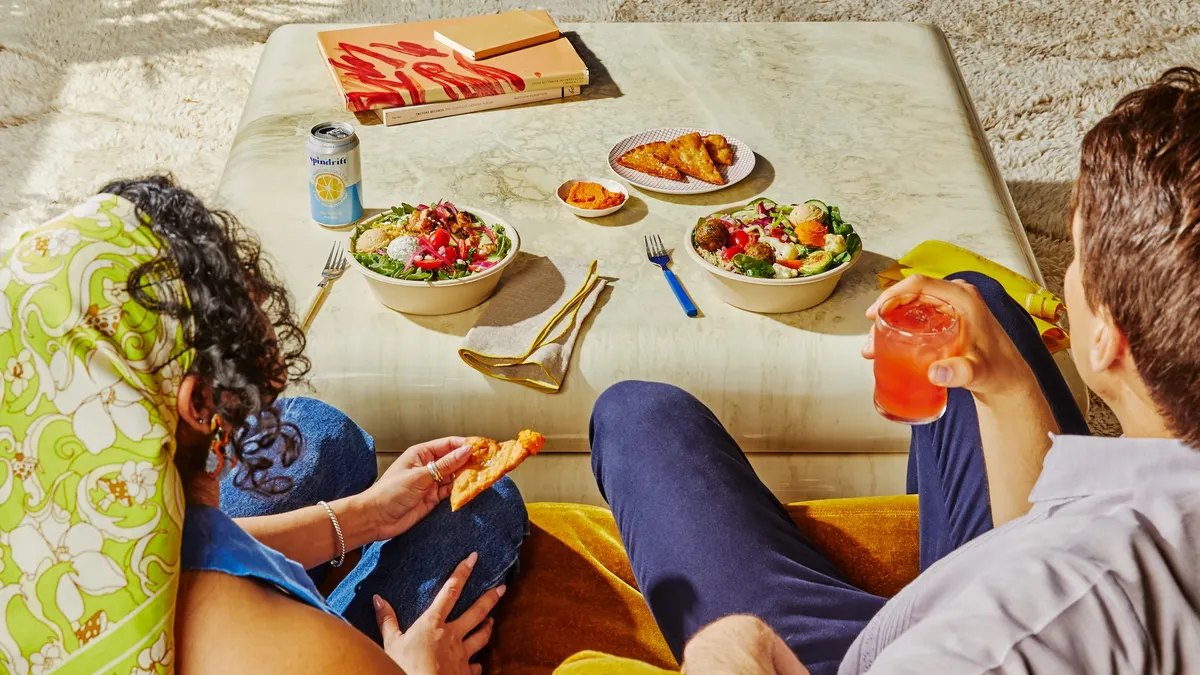Clarification: This story has been updated to remove data we can no longer verify.
To drum up excitement around five store openings this year, West Elm turned to its biggest local fans, helping to drive high engagement rates across its social media channels.
The retailer worked with Social Native to support its Local Love program by tapping people living in cities where a store was opening who are interested in home decor, design and DIY. West Elm sent these individuals a limited-edition, store-branded tote bag created specifically for each city, urging them to get creative and post photos with the bag on Instagram that also reflect their love for their hometown.
“Our goal is to create a sense of community and authenticity within each city,” Aaron Able, West Elm’s director of social media and digital content, told Marketing Dive. “We give a lot of creative freedom so the content is a true reflection of the cities West Elm calls home. The content is authentic and natural in an Instagram feed.”
Some of the photos are repurposed across West Elm’s own channels, including Instagram, Facebook, Twitter and blog Front + Main. The retailer also used Social Native to find local creators in seven cities with existing stores and sent them heart pins along with a request to snap photos that highlight their communities and post them on Instagram using the hashtag #westelmLOCAL.
Real-time content activation
Some might consider West Elm’s strategy to be influencer marketing, but Social Native CEO and co-founder David Shadpour doesn’t see it that way. He told Marketing Dive that the platform’s creators produce more authentic content than influencers, which may be paid thousands of dollars to create something for a brand they may or may not care about. And, Social Native’s creators often don’t have huge social media followings like influencers.
“For a nominal incentive, people are opting in [to Social Native] because of an affinity for the brand or because they have a very creative, unique idea and they want to express their creativity,” Shadpour said.
Because Social Native’s onboarding process captures location and other data from its creators, they can be mobilized in real time via text message and produce content within hours. This is in contrast to how content is produced at big agencies, which may involve months of brainstorming and cost tens of thousands of dollars — but, Shadpour emphasizes that Social Native is not out to replace agencies. Instead, it wants to supplement the highly produced content.
The authenticity of content and the results produced by fans has inspired West Elm to use Social Native for multiple campaigns. The first promoted a collaboration with Whole Foods Market in 2016, according to Able. Other campaigns have focused on driving in-store traffic. For one, creators were asked to help friends and family celebrate their wedding day with a gift from West Elm’s registry by posting photos, using the hashtag #bestguest.
This month, West Elm is partnering with the American Society for the Prevention of Cruelty to Animals to create an ornament collection modeled on famous Instagram pets. The company will donate $1 to ASPCA for every picture posted on Instagram with the hashtag #westelmxaspca on Nov. 9.
Tapping social media's creative spirit
With these campaigns, West Elm has been able to tap into a pool of targeted “micro-influencers” with a specific message and get creative content from real people who are fans of the brand, Able noted.
“Authenticity is the key,” he said.
This year’s Advertising Week conference highlighted the evolution of influencer marketing, specifically how brands are pairing content produced by both agencies and influencers and using influencers to localize their content —and, getting better results than with traditional content. Platforms like Social Native offer a way for brands to tap into the creative spirit of social media without a big commitment to influencers.
“We're not building high-production, agency-style content. We're not in the wild, where somebody could post something that may not be in line with your brand. We’re the middle line where we're empowering average consumers that are very talented,” Shadpour stated.
Capitalizing on the fact that there are billions of smartphone users worldwide and the idea that any one of these users has the potential to create “badass content,” was the idea behind the founding of Social Native about two years ago, said Shadpour.
Local flavor
Brands working with Social Native specify what kinds of content they’re looking for, and the platform sends out a call to its creators, which currently number more than 100,000 and growing. These individuals follow the brand’s directions, submit their content and are paid a fee. The brands receive libraries full of content created by real people.
With people spending only about 1.7 seconds with a piece of content on social media — translating to a need for new content on a regular basis — user-generated content that can be constantly created is a cost-effective way for brands to get their message out and capture audiences, according to Shadpour.
“We want to be able to activate boots on the ground in South Korea, Argentina Canada, wherever, but we also want to be able to do a hyper-local activation where Coca-Cola can say, ‘I have a mural in Brooklyn on a specific street on a specific wall and I want people to create great content around that,’” Shadpour explained.



















